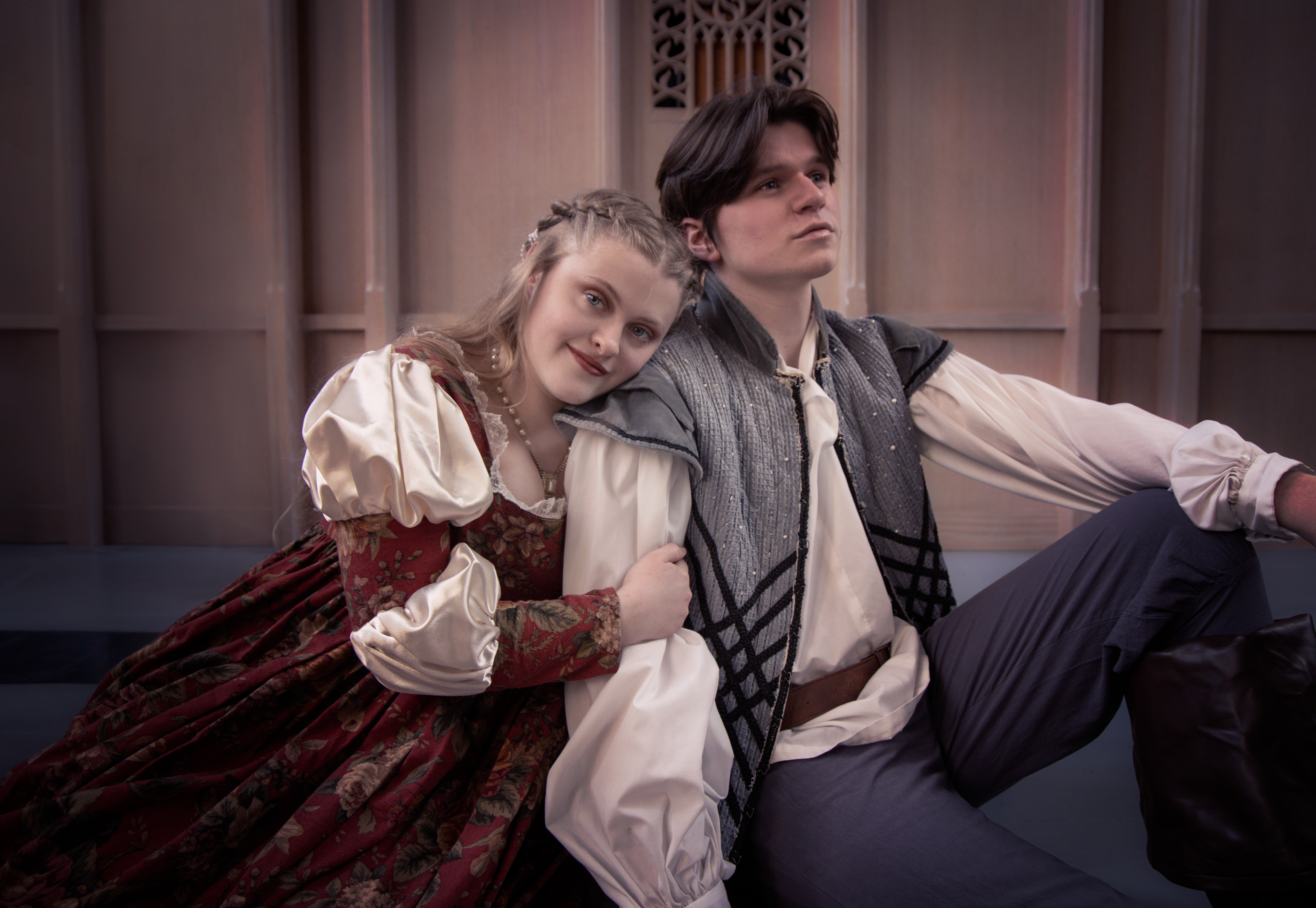
Josh Baig was a student at Spokane Falls Community College when he first met Bill Marlowe, a longtime SFCC instructor who also headed the college’s drama department until his retirement in 2016.
Looking back, Baig recalls it as a pivotal time. Not only did Marlowe end up stoking his love of theater, he also cultivated in Baig a deeper appreciation of Shakespeare. Those two interests would shape Baig’s further education and career path along with his very intentional involvement in plays like Richard III, The Tempest and The Comedy of Errors.
It’s somehow fitting, then, that the erstwhile student and teacher would be reunited for the Spokane Civic Theatre’s production of Romeo and Juliet, which opens this weekend on the theater’s main stage. Baig is directing the evergreen Shakespearean tragedy; Marlowe is assistant directing.
“He’s my go-to,” Baig says of his former instructor. “Anytime I have a Shakespeare project, whether it’s me being in the production or directing it, I always seek advice from him.”
In this show, Baig has been relying on Marlowe’s advice for semantic interpretations and certain stage directions, like the significant entrance of Tybalt’s ghost. Yet he hasn’t exactly been shy about following his own instincts. When Marlowe weighed in with a different take on the color scheme of the Capulet flags, Baig held firm to his own idea.
“There are some things we disagree on, but for the most part, whenever he gives notes, I don’t really second-guess it. You know, we’re all getting together for the beauty of theater. Whether it’s me, Bill, the costumer, the designer, the actors or the stagehands, everybody makes this thing happen. It’s a collaborative effort,” he says, in service of a “vision” that the director stewards.
The vision of this particular production isn’t meant to be radical. Whereas plenty of directors have transported Shakespeare’s plays to different settings in the service of novelty or timeliness, as Sam Gold did with his recent Gen Z-oriented Romeo + Juliet on Broadway, Baig is approaching this from a more traditional angle.
“There’s nothing wrong with concepts,” he says. “I think they can work. But I was kind of getting tired of seeing the modern concepts of the stuff that I grew up on. So I’m trying to keep it as period and authentic to the time as I can. I like the [Renaissance] costumes, the sword fighting, the dancing.”
At the same time, regardless of whether it’s set in 16th-century Verona or contemporary New York, the story of Romeo and Juliet centers on its titular star-crossed teenage lovers. Here they’re played by Abe McKinney and Heather Stephens.

Act one, scene five of Shakespeare’s play famously brings the two characters together in a fateful first encounter at a Capulet ball. But McKinney and Stephens are no strangers. They’ve been friends ever since they appeared together in a Christian Youth Theater production of Seussical the Musical several years ago.
“That makes it so much easier to be put in a role like this,” McKinney says. “With Heather, we just got to skip past the building of our friendship because we already had a friendship. And so we got to go straight to acting, which was so lovely.”
McKinney’s own take on Romeo is attentive to the character’s rapid transition from a youthful innocent to someone who suddenly finds himself at the heart of the blood feud between the Montagues and Capulets.
“When I first thought of Romeo, I thought of someone who’s cool, confident, romantic. And then, really diving into the character, he isn’t. Honestly, what stood out to me is how fast Romeo is forced to grow up, how he comes to terms with all these things that happen back to back,” McKinney says.
Likewise, Stephens is looking to capture Juliet’s evolution from lovestruck ingénue to a young woman who, like Romeo, ends up feeling the weight of the two families’ self-perpetuating conflict.
She says that Baig’s decision to stage a more period-appropriate version of the play helps in that regard.
“One of the lines that Lady Capulet says to Juliet is that she was already a mother by the time she was at the age that Juliet is now. You remember, oh, yes, she’s a child, but in this day and age it was common for them to be married and having children. So she still has to have that maturity, and being able to keep it in that timeframe just feels so special.”
Aside from the central couple’s rapid — and ultimately fatal — journey out of innocence, Stephens says that Romeo and Juliet strikes her as a timely cautionary tale about letting anger and resentment trump understanding and compassion.
It’s a sobering message that’s delivered by Abby Constable’s Princess Escalia (a recasting of Prince Escalus) as the warring houses are both forced to consider what their mutual hatred has wrought.
“That’s just a huge viewpoint of it,” Stephens says. “No matter how much hate there can be between people, we need love. Because love is what brings us together.”
Romeo and Juliet • March 28-April 13; Thu-Sat at 7:30 pm, Sun at 2 pm • $15-$40